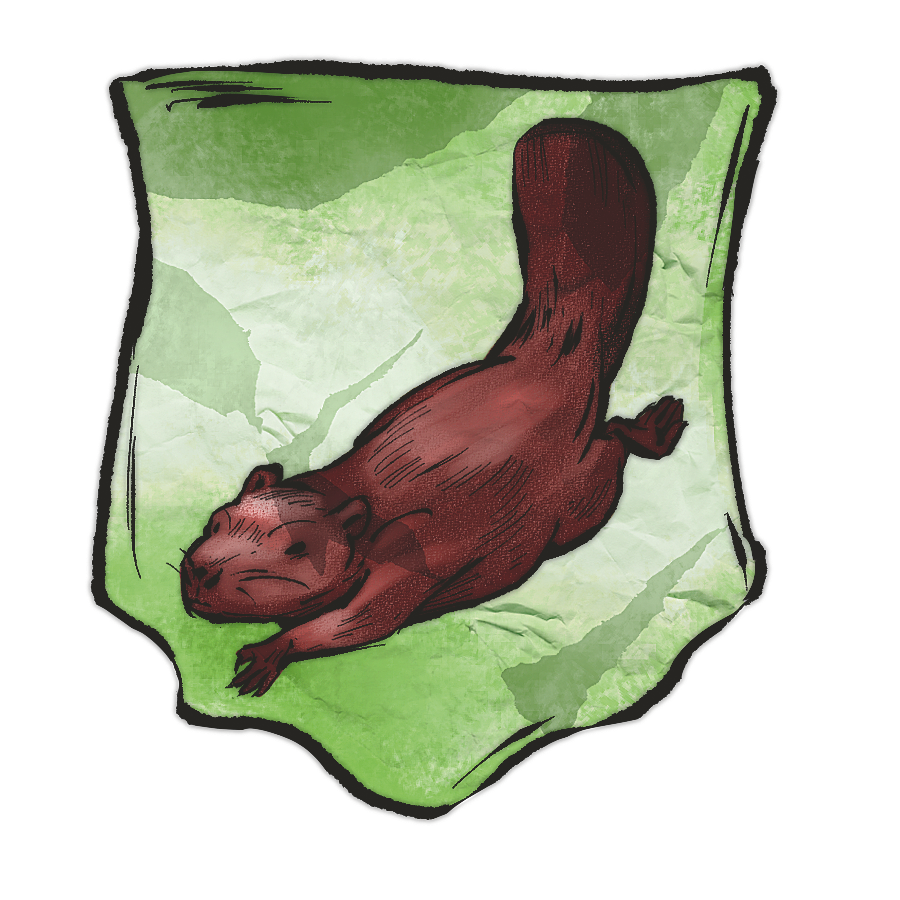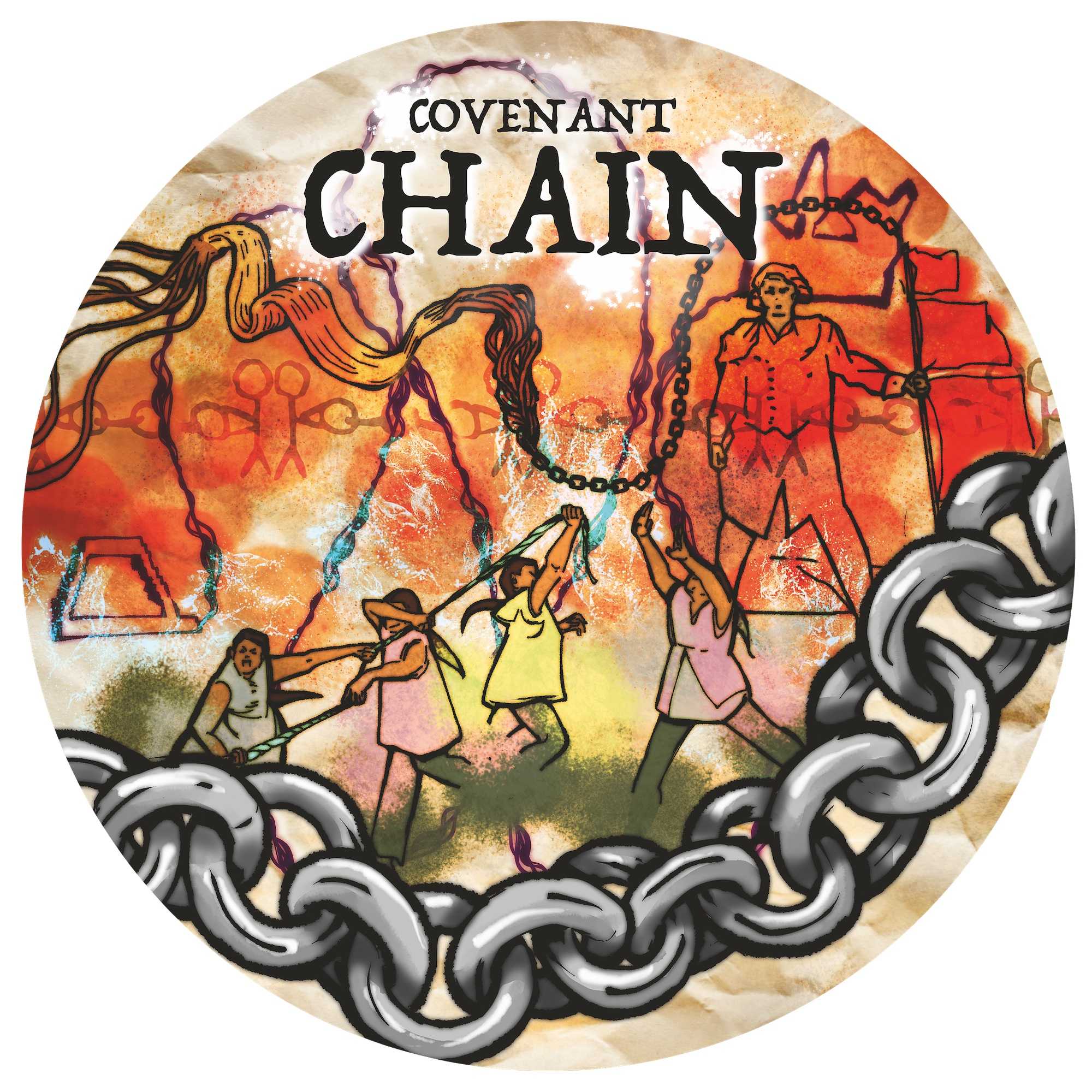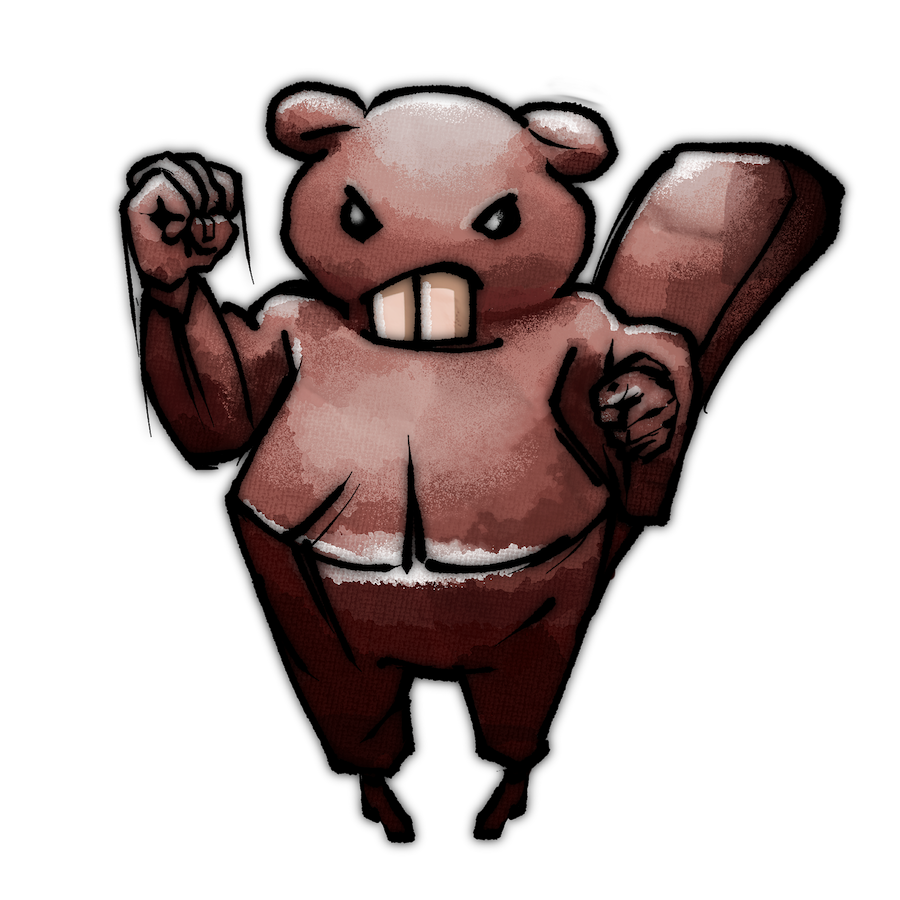The Covenant Chain, 1667
The Dutch are defeated by the English in 1667 and assume Dutch responsibilities in the Two Row Alliance with the Haudenosaunee. To maintain the relationship, the English must become fluent in Haudenosaunee diplomacy. They begin to use the metaphoric language and embodied gestures of treaty diplomacy used by the Haudenosaunee. By following Indigenous treaty Protocol at regular Councils, they signal their agreement that treaties are not static; both parties commit to ensuring the best outcome for each other and all their relations.
The Mohawk-Dutch Two Row Wampum agreement evolves into the Haudenosaunee-British Covenant Chain. This alliance assumes that there will be conflict and that the Chain needs to be regularly “polished” to sustain the relationship. At periodic Council meetings, British and Haudenosaunee representatives hold each other to account, exact justice for transgressions, and demand loyalty and fairness. They negotiate trade, set the prices of trade goods, and make requests for military assistance from each other. The British promise to investigate and settle compensation for murders. For the Haudenosaunee, the Covenant Chain remains the foundation of their relationship with the Crown to this day. As British settlement proceeds in New England, however, fraudulent land cessions and uses of land that are not welcome by the Haudenosaunee become a serious issue.

Our bodies are holistic vessels for memory, as opposed to the far more limited information provided by the written word. Alongside spoken language, many Indigenous nations in the area were familiar with a set of hand signs that could help communicate across language barriers. The British and French likely picked up some of these embodied and performative gestures to show or perform trustworthiness. Early Europeans used these signs to forge trade, gain information, and make themselves understood. Were embodied communications part of agreement making in Toronto? Some of the embodied gestures and actions that would have been part of treaty making include clearing minds, sharing meals, smoking pipes, exchanging words attached to Wampum, holding each other by the arms and calling each other brother.
In what ways can these agreements be remembered in the body, outside of text and Wampum? The Haudenosaunee translation of the name for the Covenant Chain includes the description of arms clasped together. Holding or clasping onto each other by the forearm is mentioned in early documentation to indicate brotherhood, alliance, and commitment.
Pair up and grasp your own arms together at the forearms. Test the strength of this connection versus holding each other’s hands. Move your arms together in this position, leading with one arm, then the other. Does your grip change? When one side is leading, does the other side follow easily?
Shake it off, then slowly return to lightly grasp both arms at the forearm. With this connection, lead your movement from the space between your wrists. Lighten your grip and move the connected arms as one structure, stretching into your back and shoulders.
Over time, the Covenant Chain alliance will affect all nations living in the Toronto area.
Being part of the alliance keeps the road to trade clear, maintains a delicate balance of power, and serves as a check on French territorial ambitions that threaten both the British and Haudenosaunee. But these arrangements require many revisits. As the alliance deepens from a trading relationship to a military and political alliance, the way the pact is visualized and spoken about changes. Since the origin of the agreement with the Dutch, it has gained strength through its talk, though it is under the constant strain of the colonial ambitions of the English.
Individually or in groups, work your way through the following text from a 1744 speech by Haudenosaunee leader Canasatego that recounts the origin of the alliance.
- Find three or four gestures and movement expressions to replace ideas.
- String together a movement sequence by combining these gestures.
- Rehearse your sequence to yourself.
- Capture your movement sequence in a pictograph.
- Share sequences as a group, one following the next, quickly around the circle, repeating on a loop, slowing down each time. Focus in on the tensions – wringing, pulling, stretching, pressing – deliberately slowing to stillness as a group.
Above one hundred years ago the Dutch came here in a ship, and brought with them several goods; such as awls, knives, hatchets, guns, and many other particulars, which they gave us; and when they had taught us how to use their things, and. we saw what sort of people they were, we were so pleased with them, that we tied their ship to the bushes on the shore; and afterwards, liking them still better the longer they stayed with us, and thinking the bushes too tender, we removed the rope, and tied it to the trees; and as the trees were liable to be blown down by high winds, or to decay of themselves, we from the affection we bore them, again removed the rope, and tied it to a strong and big rock (here the Interpreter said, they mean the Oneida country) and not content with this, for its further security, we removed the Rope to the big mountain (here the Interpreter says they mean the Onondaga country) and there we tied it very fast, and rolled wampum about it; and, to make it still more secure, we stood upon the wampum, and sat down upon it, to defend it, and to prevent and hurt coming to it, and did our best endeavors that it might remain uninjured for ever. During all this time the newcomers, the Dutch, acknowledged our right to the lands, and solicited us, from time to time, to grant them parts of our country, and to enter into league and covenant with us, and to become one people with us.

Reflect on the connections in the following passage. What's the difference in the strength and endurance of each kind of bond? Find examples of this type of material in your environment. Use evocative adjectives to describe their strength and weaknesses.
A handshake
A rope
An iron chain
A silver chain
It is now almost 100 years since your Forefathers and ours became known to each other. – That upon our first acquaintance we shook hands and finding we should be useful to one another, entered into a covenant of Brotherly love and mutual friendship. – And tho' we were at first only tied together by a Rope, yet lest this Rope should grow Rotten and break, we tied ourselves together by an iron Chain – lest time and accident might rust and destroy this Chain of iron, we afterwards made one of Silver; the strength and brightness of which would but eject to no decay – The ends of this Silver chain we fixt to the immoveable mountains, and this is so firm a manner, that the hands of no mortal Enemy might be able to remove it . . . that we became as one body, one blood and one people, the same king our common Father, that your Enemies were ours, that whom you took into your Alliance and allowed to put their hands into this Covenant Chain as Brethren, we have always considered and treated as such . . . If you will be true Brothers to the English, and neither enter into any underhand agreements with the French, or any treaties with them against your Bretheren the English, If you do this with sincerity and keep it truly and honestly – I am now ready with this Belt . . . to renew, to make more strong and bright than ever the Covenant Chain of love and friendship.






